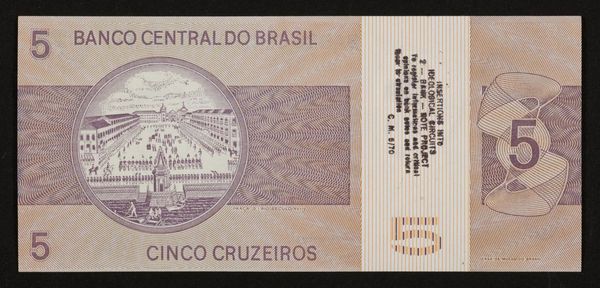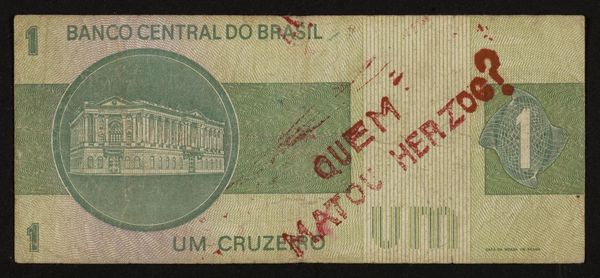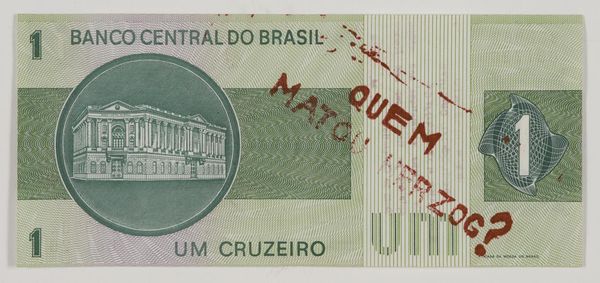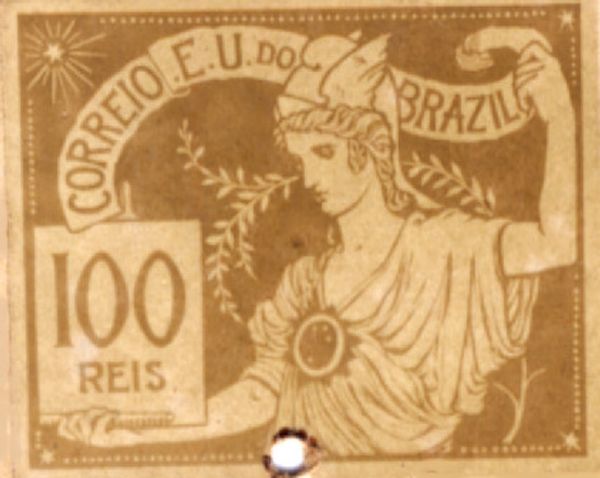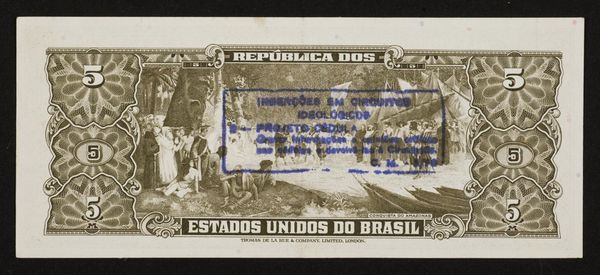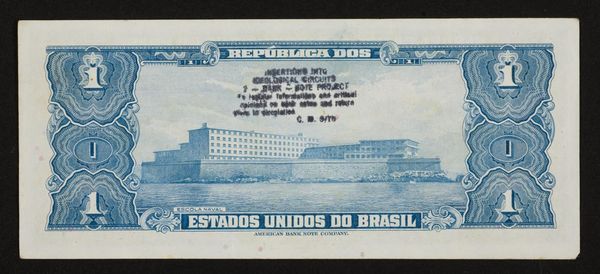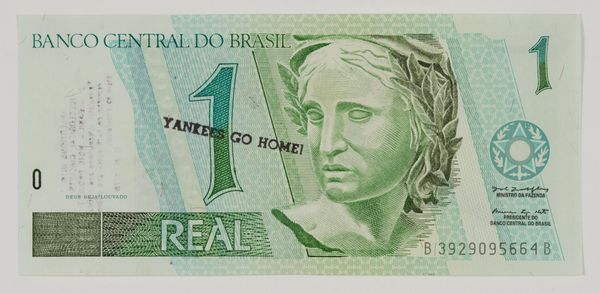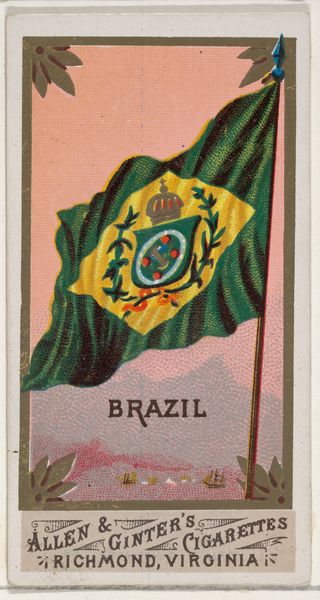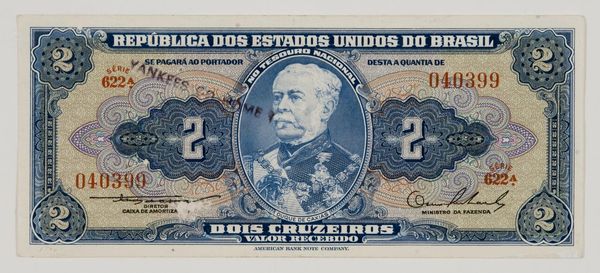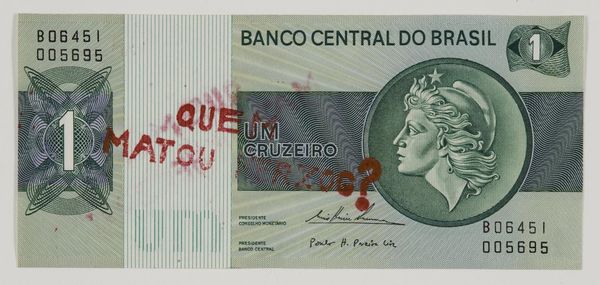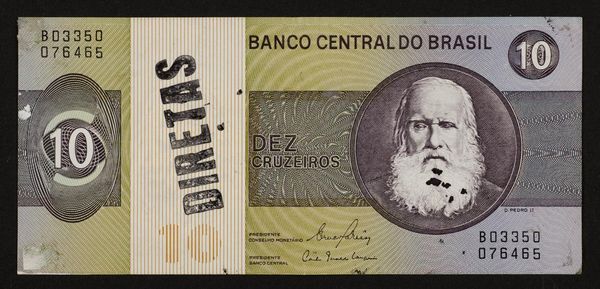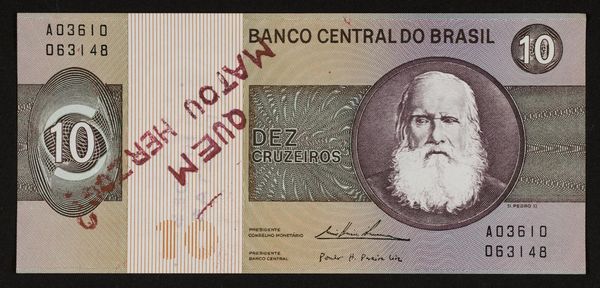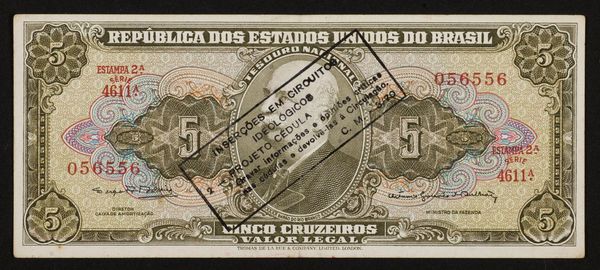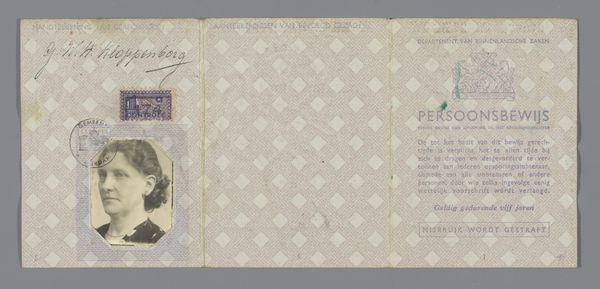
Copyright: © Cildo Meireles | CC-BY-NC-ND 4.0 DEED, Photo: Tate
Curator: Cildo Meireles' "Insertions into Ideological Circuits 2: Banknote Project" presents a modified Brazilian cruzeiro. The pale green and delicate linear patterns give it an unexpectedly quiet aesthetic. Editor: The very act of intervening in currency exposes the material conditions of value itself. These banknotes, once marked, become carriers of messages, disrupting the smooth circulation of capital. Curator: Precisely, it's about questioning the inherent structure of value and the power embedded within it. The defacement redirects the semiotic flow. Editor: These "inscriptions" challenge the illusion of neutrality surrounding money, revealing the social relations inherent in everyday transactions. Curator: Indeed, it's a potent disruption of the assumed symbolic order. Editor: It makes me wonder if we truly grasp the labor embedded in each banknote we hold. Curator: Food for thought—or perhaps, artwork for thought.
Comments
tate 6 months ago
⋮
http://www.tate.org.uk/art/artworks/meireles-insertions-into-ideological-circuits-2-banknote-project-t12532
Join the conversation
Join millions of artists and users on Artera today and experience the ultimate creative platform.
tate 6 months ago
⋮
Meireles conceived his two Insertions into Ideological Circuits projects for an exhibition of conceptual art held at The Museum of Modern Art, New York in 1970 entitled Information. The Cédula or Banknote Project and the Coca-Cola Project (see Tate T12328) explore the notion of circulation and exchange of goods, wealth and information as manifestations of the dominant ideology. For the Banknote Project Meireles stamped subversive messages onto banknotes before returning them to normal circulation. The twenty-seven banknotes presented to Tate by the artist include varying denominations of cruzeiro notes – the Brazilian currency of the time – as well as US dollar bills. The messages, appearing in both English and Portuguese, include such anti-American slogans as ‘Yankees Go Home’ as well as calls for democracy and political freedom – ‘Straight Elections’ – and the words ‘Quem Matou Herzog?’ or ‘Who Killed Herzog?’, referring to a journalist who died in police custody under suspicious circumstances. Meireles stamped the banknotes on both sides – his message appearing on one side and the work’s title and the artist’s statement of purpose: ‘To register informations and critical opinions on bottles and return them to circulation’ – appearing on the other. The Coca-Cola Project follows a similar format: Meireles attached transparent labels with his slogans and the work’s title and purpose to the sides of Coca-Cola bottles which, once emptied of Coca-Cola, would be returned to the factory to be reused. Thus the artist’s messages circulated invisibly within Brazilian society. Meireles has commented:
